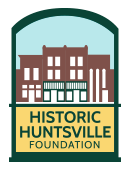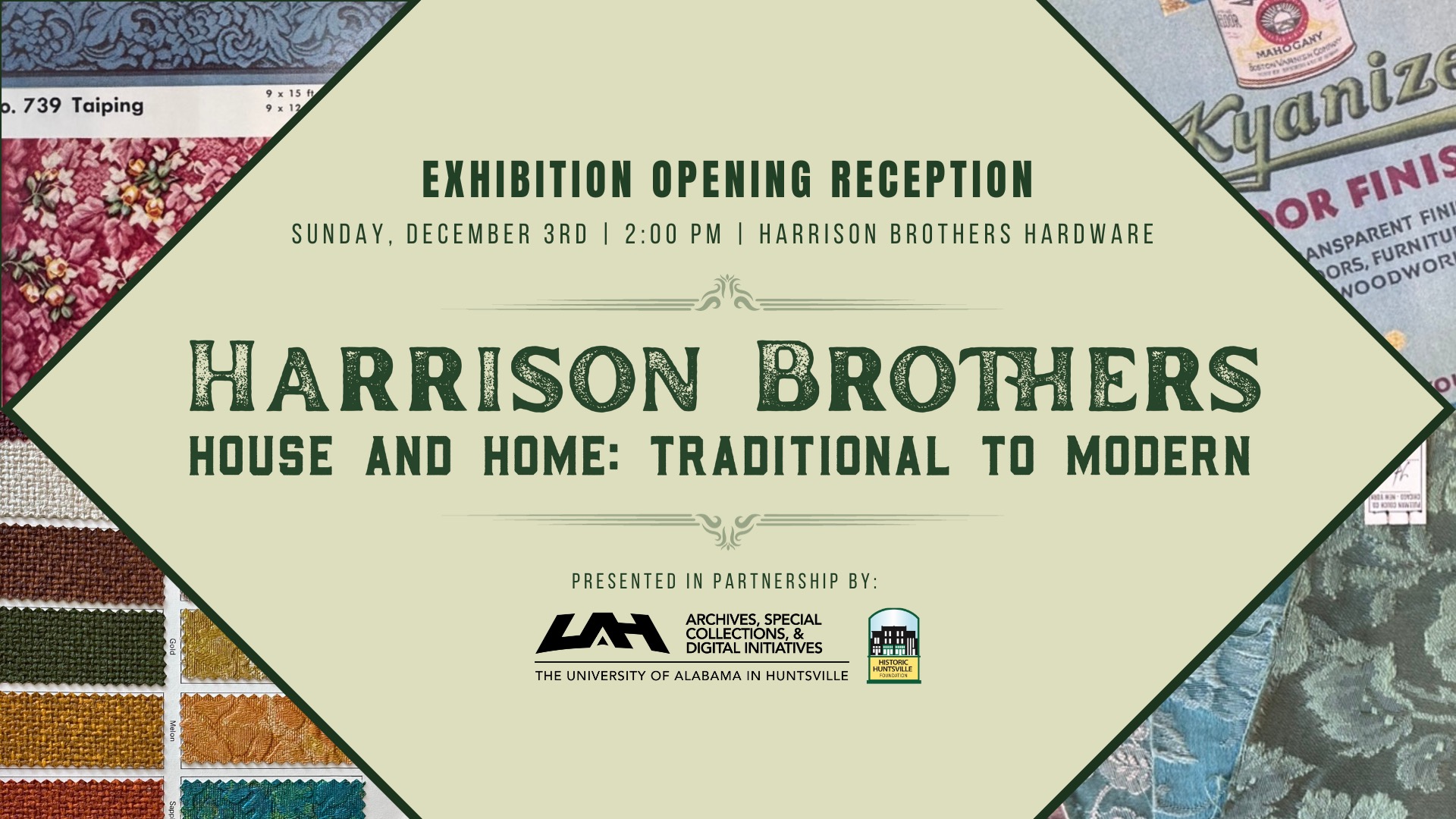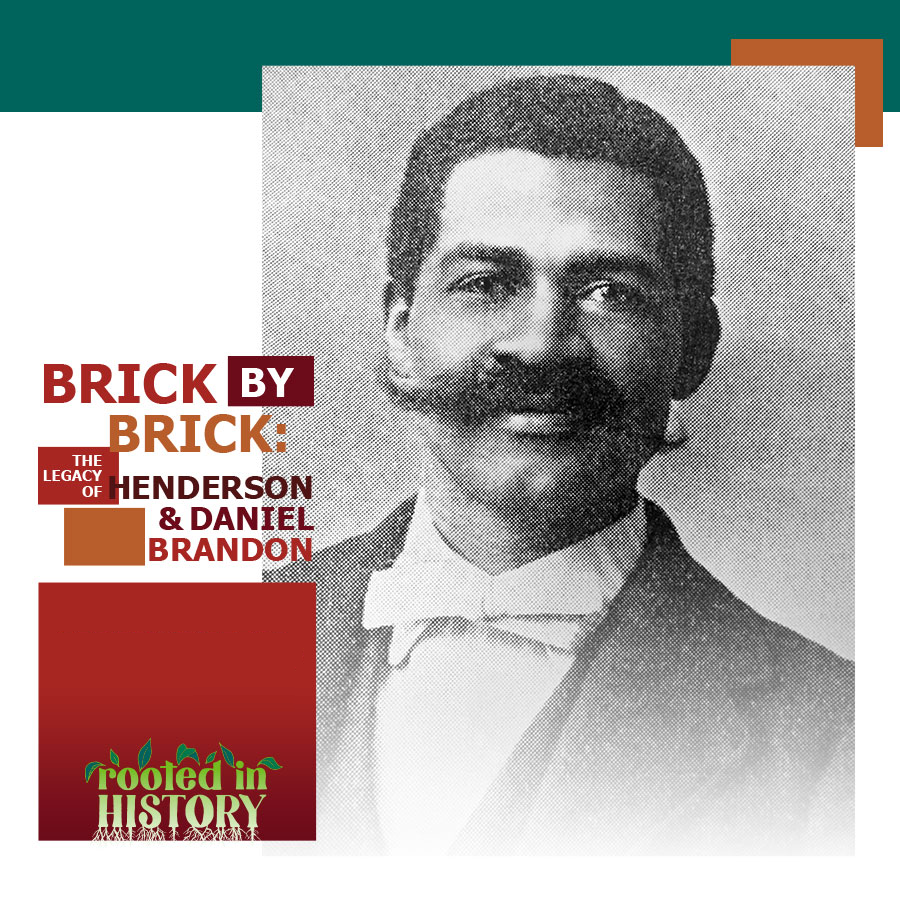CURRENT EXHIBIT
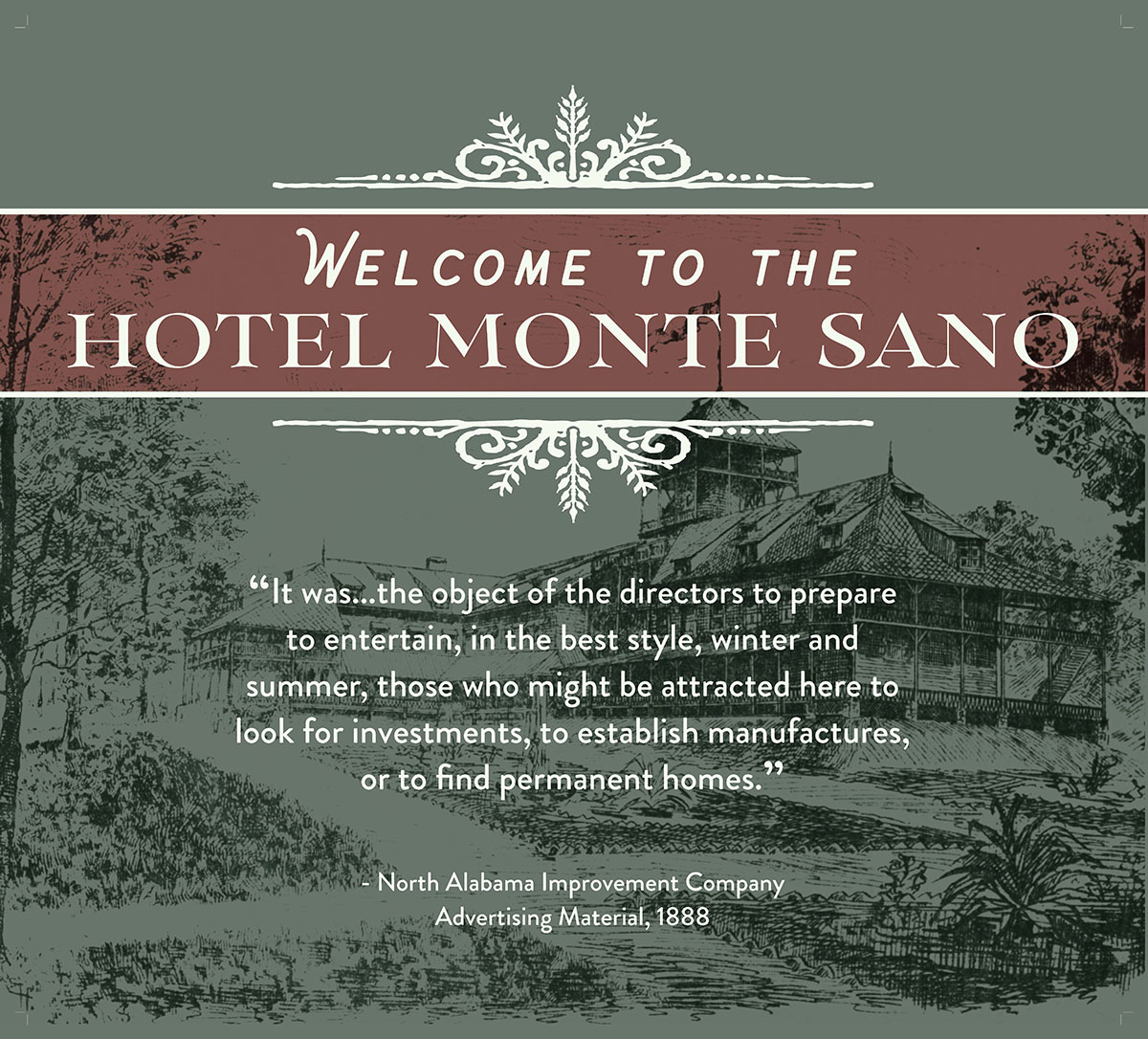
When Huntsville was a small town with big city dreams, a group of influential and wealthy capitalists formed the North Alabama Improvement Company (NAIC) in 1886 to transform North Alabama into a major manufacturing hub. Led by New York financiers Michael and James O’Shaughnessy, these boosters believed Huntsville’s fertile cotton fields, abundant water sources, rail lines, and scenic beauty were the key to the city’s future.
The Hotel Monte Sano was the linchpin of their plan, providing luxury accommodations for wealthy guests as they explored investment opportunities in Huntsville and North Alabama.
Past exhibitions
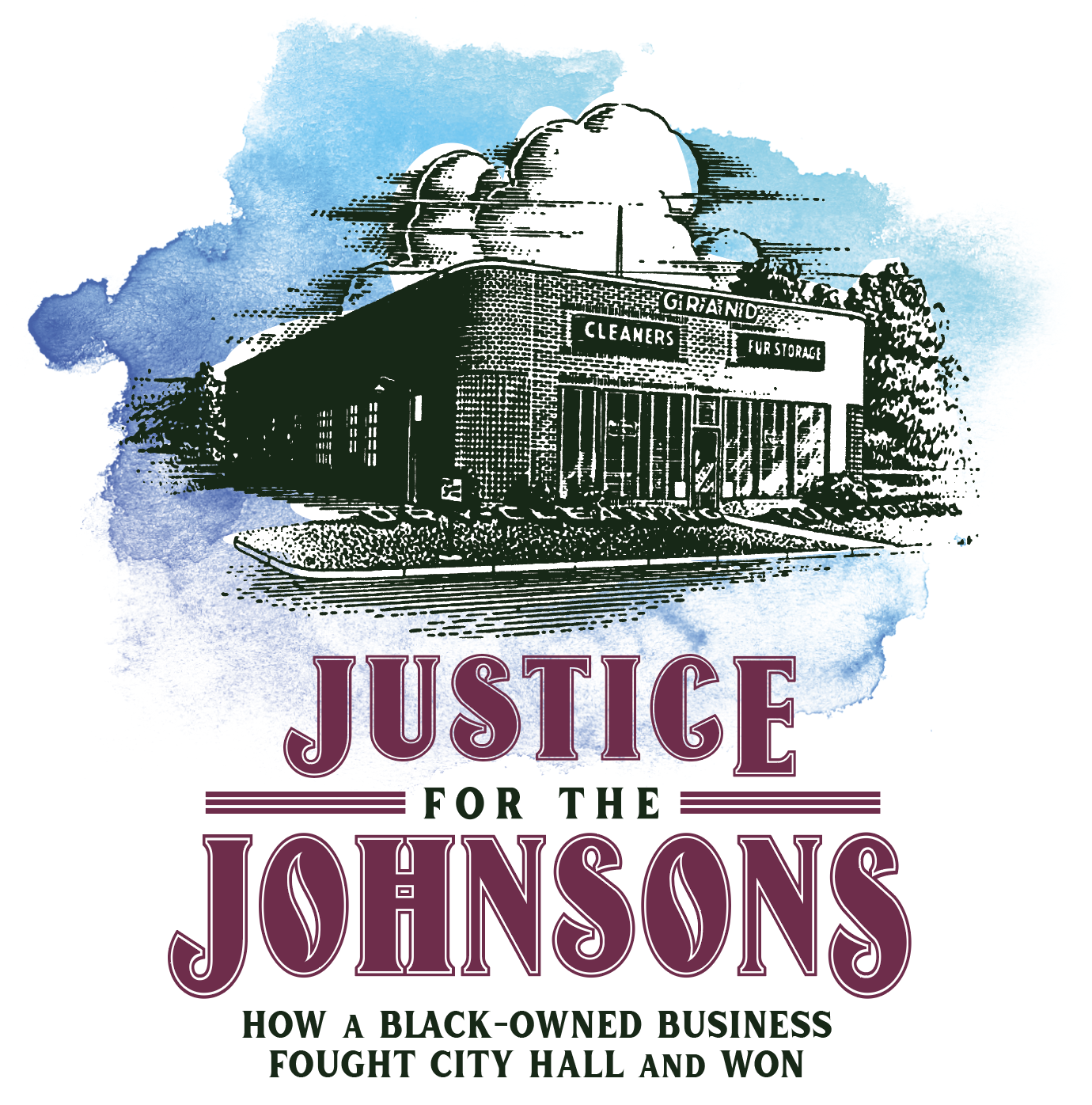
When Lou Bertha and Shelby Johnson sued the City of Huntsville in 1946 over a zoning dispute, they showed that it was possible for a Black business owner to fight City Hall in the Jim Crow South . . .and win… <learn more>
We are pleased to present the “Harrison Brothers: House and Home – From Traditional to Modern” exhibition, which highlights the furnishing and household goods sold by the Harrisons from 1900-1960. Using original sample books and furniture catalogs, this exhibition shows the evolution of Huntsville from the Watercress Capital of the World to the Rocket... <learn more>
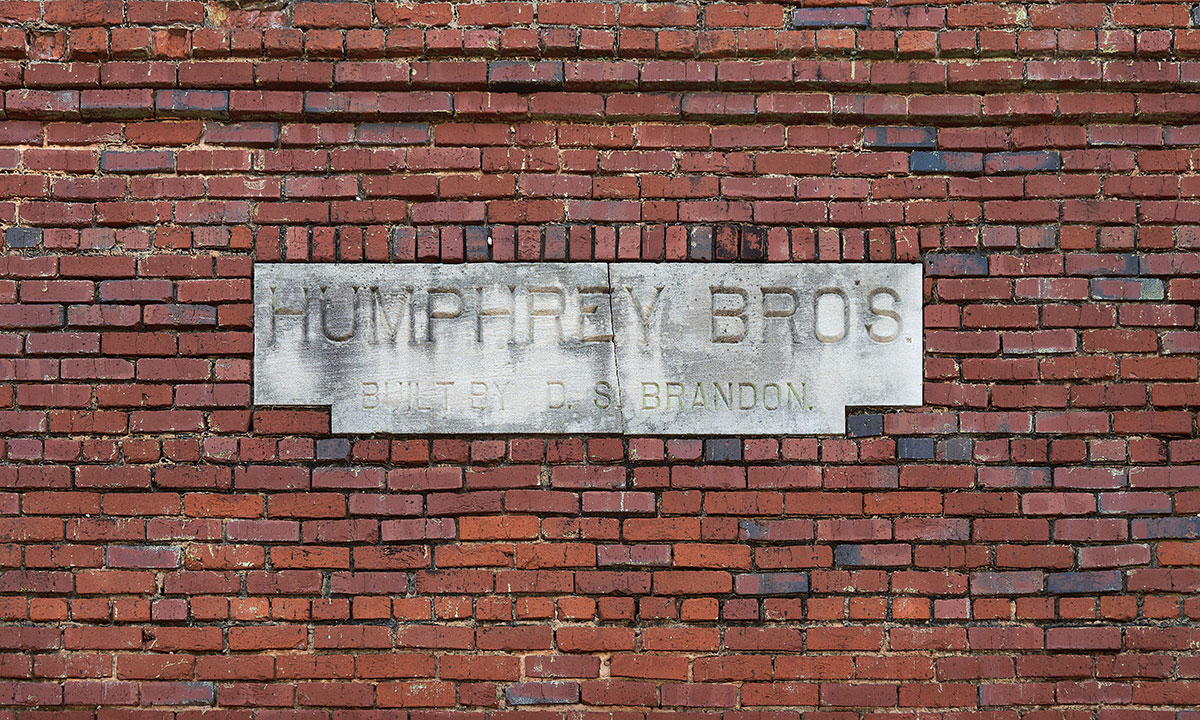
Our “Brick by Brick: The Legacy of Henderson and Daniel Brandon” exhibition celebrates the history of Henderson and Daniel Brandon, founders of Huntsville’s most successful Black-owned business in the Reconstruction era. Our exhibition brings long overdue recognition to a masonry firm who constructed some of Huntsville’s most iconic buildings.
Here, we share the history of Henderson and Daniel Brandon, a family who made the transition from enslaved to free following the abolition of slavery in 1865. This history is personal for the Foundation, as we learned recently that Daniel Brandon’s masonry firm rebuilt the Harrison Brothers building following a massive fire in 1901.
We are honored that the National Park Service selected “Brick by Brick” for inclusion in the Reconstruction Era National History Network, a program that highlights the history of freed men and women following the abolition of slavery.
ABOUT THE HISTORIC HUNTSVILLE MUSEUM
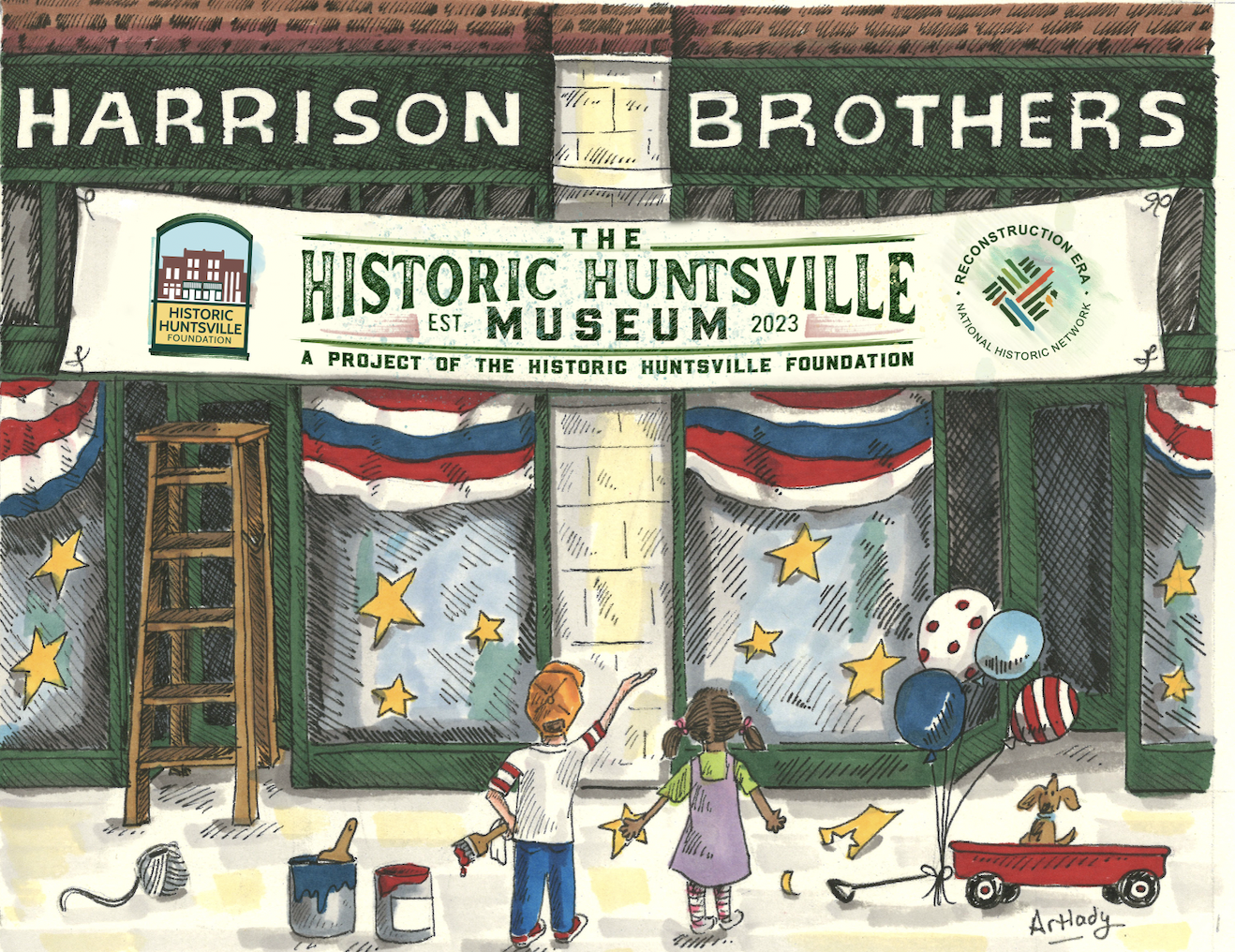
Our Historic Huntsville Museum in Harrison Brothers Hardware is Huntsville-Madison County’s first museum dedicated to sharing Huntsville-Madison County history from the perspectives of both Black and white residents.
“Brick by Brick” is the featured exhibition in the newly debuted Historic Huntsville Museum, a project of the Historic Huntsville Foundation. This FREE exhibition is located in Harrison Brothers Hardware. Along with being Alabama’s oldest operating hardware store, a top tourist designation, and home of the Harrison Brothers Gallery, our nonprofit gift shop specializing in local and regional art, the Harrison Brothers building is the best preserved example of Daniel Brandon’s work.
HOURS & LOCATION
The Historic Huntsville Museum is FREE and open to the public from 10AM to 5 PM, Monday through Saturday, in Harrison Brothers Hardware, a project of the Historic Huntsville Foundation. Harrison Brother is located at 124 Southside Square on Huntsville’s historic courthouse square, where we’ve been since 1897.
If you would like to schedule a tour of the exhibition for your school, civic, or community group, please contact our Executive Director Donna Castellano at Donna@historichuntsville.org.
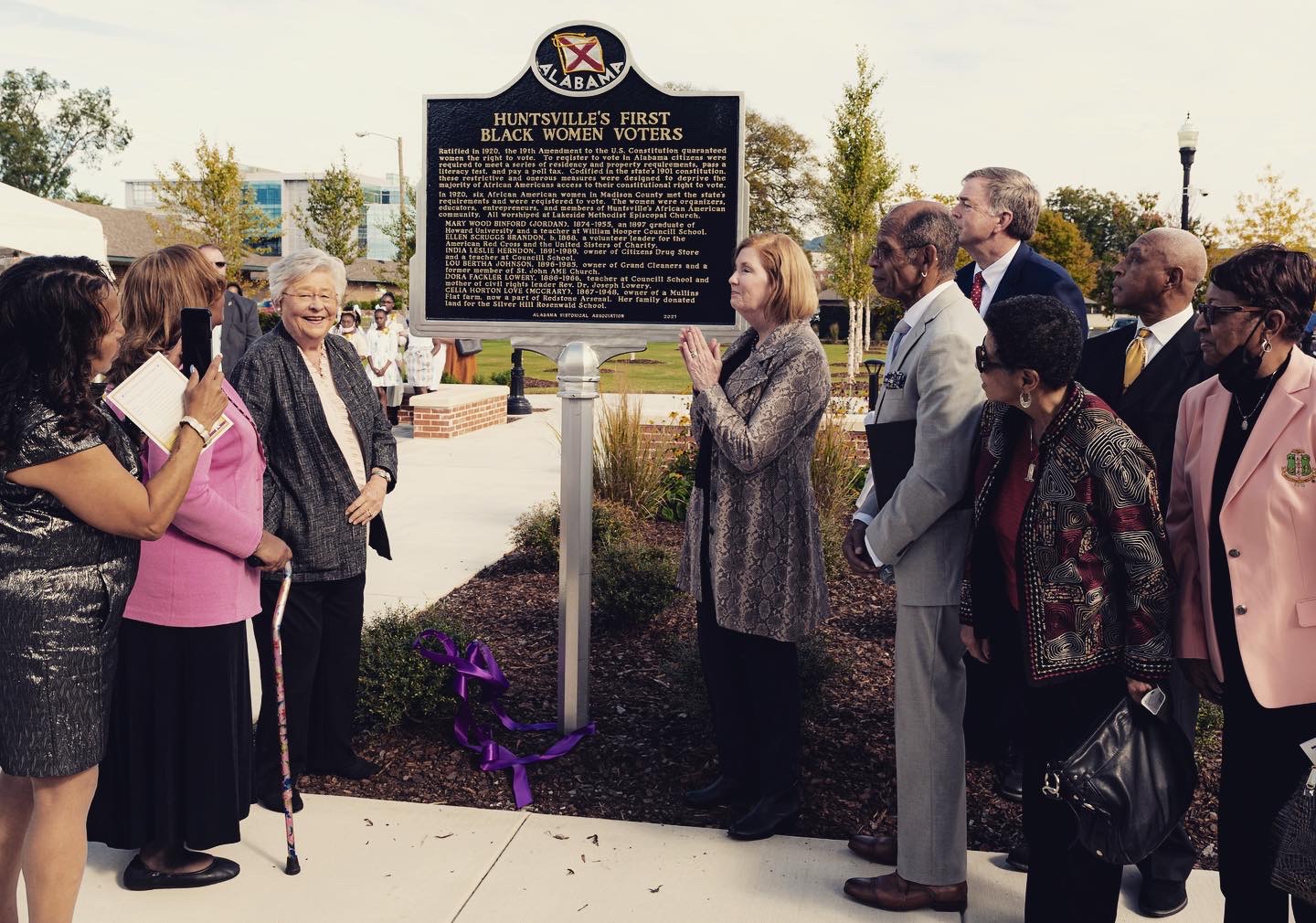
Text content
